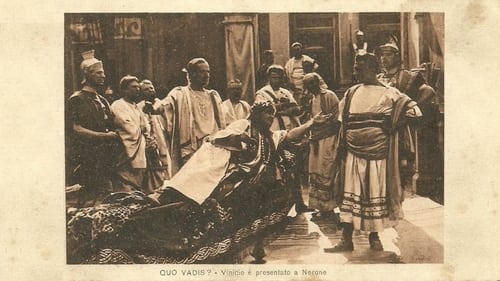
A fragment of a short comedy of Neapolitan setting, in which the actor Vincenzo Scarpetta, son of playwright Eduardo, is struggling with a Miss across the Atlantic. The woman throws a chest in the sea, asking his lover to recover it as proof of love. He turns to a fisherman, offering him money to complete the recovery for him. The film, shot in 1916, was, for reasons unknown, unpublished until 1918.

Story of a horse of the Italian army in Libya called Rataplan, wounded, treated and then shipped to Italy where is sold to a Coachman.

Lea
Bess is busy reading a book when her folks come in and command her to spend more time at work. They give her a ball of yarn, a crochet needle and set her to work. She is left alone and while moving around in her chair she loses track of the ball of yarn. It happens to have been caught in her belt at her back and out of her own view. Being a girl of quick temper and strong in athletics, the home is in so much of a turmoil when her parents return that Bess has not been subjected to work since. (Moving Picture World)

Lea
Italian silent western.

Lea
A man promises money to his son if he marries the woman of his choosing. The son (comically) presents his love interest as a doll to convince his father that she is the one he should marry.

Kri Kri can't have the girl he loves, so he fakes suicide.

The Black Circle is a Italian film from the Celio Film company.

Lygia
During the latter years of the reign of the tyrannical Roman emperor Nero, Marcus Vinicius, one of Nero's officers, falls in love with a young Christian hostage named Lygia. "Quo Vadis?" is a landmark in epic film-- Certainly Enrico Guazzoni’s grand-scale masterpiece laid the foundations for what colossal Italian spectacles would become. The film had tremendous influence on Giovanni Pastrone’s Cabiria (1914) and D.W. Griffith’s Intolerance (1916).

Leah
Two Merry Jokers get "caught with the goods." Leah and Lizette receive notes from their respective admirers, who wish to arrange a holiday party. Leah suggests that the three come to her house and have a jolly time. The two sweethearts, Tony and Fritz, are married men, Tony being Fritz's father-in-law. Each leaves home in the morning, claiming to have an important engagement for the day. Fritz arrives first, with parcels of good things to eat, and Lizette and her friend Tony arrive soon after. The scene which follows may be better imagined than described. However the two men pledge secrecy, and the party proves a huge success. An unexpected sequel follows the next day, for the wives happen to make purchases at the millinery shop in which the girls are employed. On delivering the hats, Leah and Lizette meet their sweethearts and learn that they are married men. Accusations, excuses and a general scrimmage follow. In which the husbands certainly "get theirs." —Moving Picture World

Lea
Roman comedienne Lea returns for more hilarious antics in Lea si diverte (1912).

Fata
Carpenter Geppetto carves a block of wood into a puppet and names him Pinocchio. As soon as his feet have been made, Pinocchio runs out the door and a series of adventures begins.

Léa
Italian silent film.





